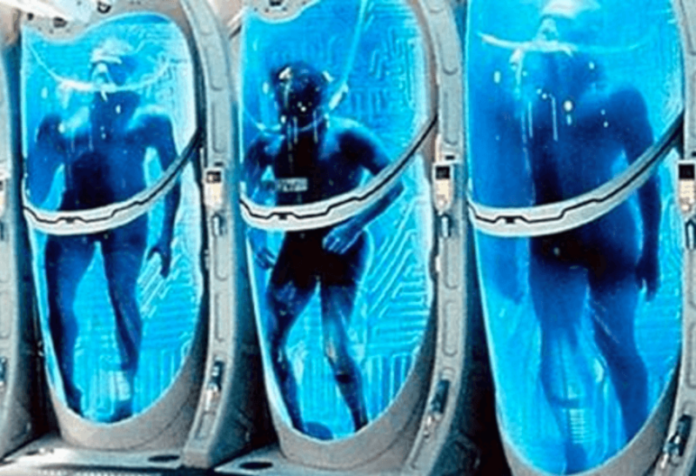Cryobiology is the study of living organisms and biological materials at extremely low temperatures. This emerging field is full of fascinating possibilities as it explores the preservation, survival, and behaviour of cells, tissues, including entire organisms when exposed to freezing environments. The central idea behind this is that life processes can be paused, assumingly for decades or centuries, by freezing biological matter. It also provides the option of reversing the freezing, thereby activating the life processes, when the conditions are apt. The advancement in cryo technology brings about promises of unlocking numerous breakthroughs in medicine, biotechnology, conservation, and even space exploration.
The Science Behind Cryobiology
The development of methodology in cryobiology was not an easy journey. At the core, cryobiology is about understanding the cell response in low temperatures, specifically during freezing and thawing processes. However, the water content of the cells posed a significant challenge to overcome. The water in the cell forms ice crystals when it proceeds to freeze and damages the cell membranes, hindering the cell integrity. Much of the studies and research has been focused on this aspect and developing methods to prevent or reduce the ice formation in the cells. As a result, cryoprotectants were developed. They are chemicals such as glycerol or dimethyl sulfoxide (DMSO) that protect cells from ice damage by reducing the formation of ice crystals. They replace some of the cell water content to achieve the result of minimising freezing-related harm. One of the key techniques in cryobiology, cryopreservation, involves cooling of biological materials to ultra-low temperature, below -150°C using cryoprotectants. This setup enables materials to be stored for extended periods without degrading owing to the principle that biological reactions virtually cease at low temperatures. Many tissues and cells can resume normal function when thawed correctly, resulting in remarkable applications in various fields.
Applications in Medicine
Amongst the well-known applications of cryobiology is the organ and tissue preservation. It is being extensively used in reproductive medicine to freeze sperm, eggs, and embryos for later usage. It has allowed individuals to preserve fertility, especially during medical treatments that can harm reproductive cells like chemotherapy. That being said, the preservation of the entire organs for transplantation and more complex tissues remain a major challenge. Freezing of entire organs is more complex as compared to individual cells due to the size and density of tissues. Scientists are on a quest of developing better cryoprotectants along with other solutions. This can solve the problem of organ shortage for transplant. Cryopreserved organs could be stored and transported to patients in need, managing the transplants in a more efficient way.
Another application worth taking a note of is cancer treatment. Cancerous tissues can be destroyed by a process called cryoablation using extreme cold. This method is becoming an alternative to conventional surgery. Doctors can freeze and kill the cancer cells without the need for invasive procedures just by inserting a cryoprobe into a tumour. This technique is already being used to treat many cancers like kidney, prostate, liver, etc., offering a highly targeted approach with less side effects.
Cryobiology and Conservation
The immense uses of cryobiology is not restricted to the confines of medicine but also extends to space exploration, and biodiversity conservation. Long duration of space exploration to planets like Mars or beyond are accompanied by the challenges posed by extended human spaceflight. One of the proposed methods for overcoming these challenges include putting astronauts in a state of hibernation. The need for food, water, and oxygen can be reduced by suspending the astronaut in an animated state or low metabolic activity through cryobiology. This way, the resources can be saved for interplanetary travel. The idea is still in the early stages of research and is inspired by the natural hibernation process seen in animals, such as some mammals and amphibians, which undergo hibernation to survive harsh winters.
Another aspect to consider is the conservation of biodiversity. The loss of flora and fauna species as a consequence of climate change and human activity can be lessened by cryopreservation. Through cryobanking, genetic material, such as sperm, eggs, and even DNA can be stored for potential future use. Cryobanks can preserve the genetic diversity of species that might otherwise go extinct. The frozen samples can be used to assist the breeding programs to even resurrect species that have been lost. Recent successes with the storage of cells from animals like the northern white rhinoceros in a cryogenic tank demonstrate the vast potential of cryobiology playing a vital role in wildlife conservation efforts.
The Challenges Ahead
Despite the potential of cryobiology and some success stories in the field of research, there are still several hurdles to overcome. The biggest challenge is to preserve entire complex organs without damaging them during freezing or thawing. Additionally, the future of cryobiology is surrounded by ethical questions regarding human applications. The notion of achieving immortality has always been the curiosity of humanity and the advocates argue that cryobiology might be a way to achieve it. It is all under speculation with the science behind it is still far from being proven, but is still a highly controversial subject.
To simply put it, cryobiology can intersect cutting-edge technology and age-old human aspirations, aiming at space exploration and curing diseases. Everything from healthcare to biodiversity conservation can be remodelled by discovering the secrets by understanding how life can be frozen, stored, and reanimated. As scientists continue to unravel the mysteries of cryobiology, we can see the impact it will have in the future of life science.

Deeksha, is a Biochemist and an aspiring neuroscientist. Her research interest lies at the intersection of molecular neuroscience and drug discovery.


